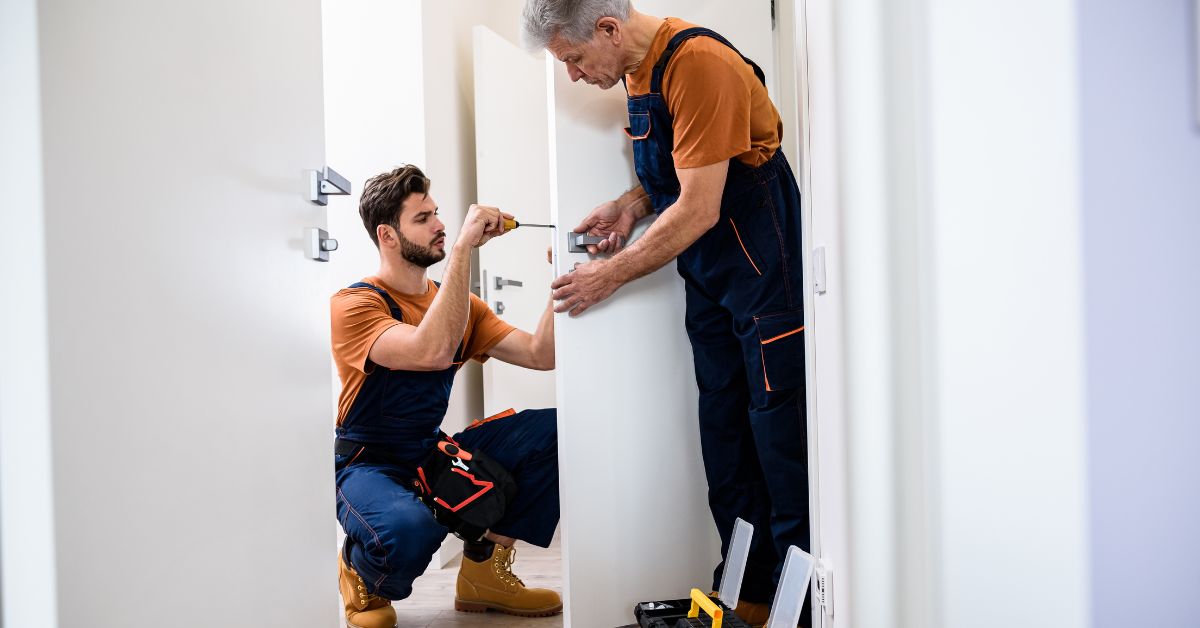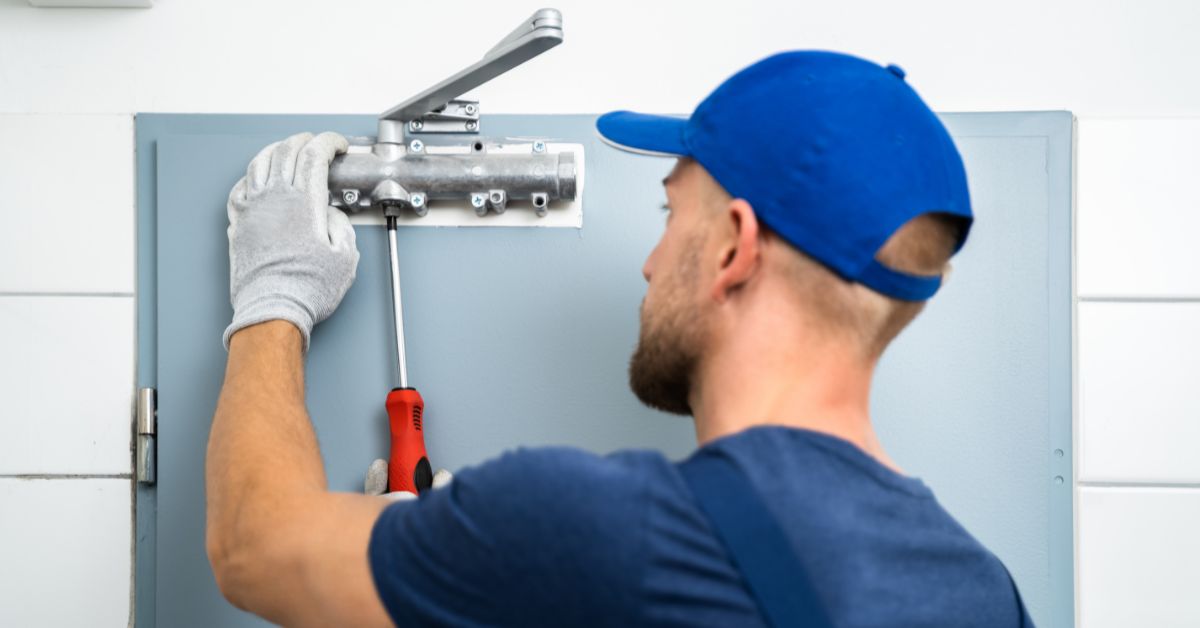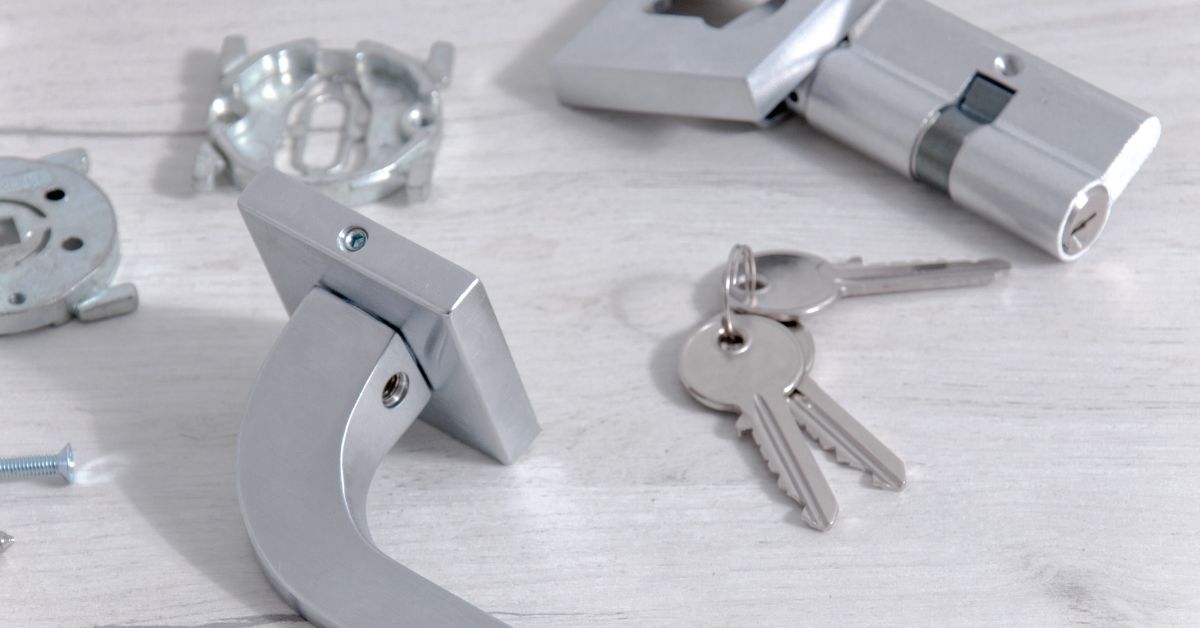Common Commercial Door Issues and How To Fix Them

Misaligned or Sticking Doors
Misaligned or sticking doors can disrupt daily operations and create frustration for employees and visitors. They can also leave gaps that compromise your business’s privacy and security.
Several factors contribute to this issue, including worn-out hinges, improper installation, or structural shifts in the building over time. Heavy usage accelerates hinge misalignment. Dirt and debris trapped in the door tracks or frame also interfere with smooth operation. Seasonal temperature changes can change how doors fit in their frames.
To mitigate this problem, start by tightening the door’s hinges using a screwdriver. If the hinges are worn out or sagging, replace them to return the door to its proper position. Additionally, clean door tracks or frame edges before applying a lubricant, such as silicone spray. If these adjustments don’t fix the problem, a professional can realign the door.
Damaged or Broken Door Closers
A faulty door closer compromises safety, convenience, and accessibility. Several things may cause malfunctioning closers, including hydraulic fluid leaks, worn-out internal mechanisms, or mismatched closers on heavy doors.
Furthermore, regular use over time wears down door closers, especially in busy facilities. Neglected maintenance accelerates these failures, and sudden impacts can damage components. If the door slams shut rather than closing gently, the closer likely needs attention. Replace worn-out closers, and select one that complements your door’s weight and usage frequency. Additionally, topping off hydraulic fluid can help.
Maintenance Tips To Extend the Lifespan of Closers
Schedule biannual lubrication and inspection of door closers to keep them functional. Regularly check for loose screws, leaks, or signs of wear to identify and address problems. Using high-quality, heavy-duty closers prevents quick deterioration due to high traffic. Moreover, replacing parts before they fail minimizes disruptions and prevents high repair costs.

Faulty Locks and Security Issues
A door with a secure lock keeps your business safe and accessible to authorized personnel only. Faulty locks or security systems, however, jeopardize that protection. Whether you rely on traditional keys or advanced electronic systems, it’s important to identify and correct problems.
Locks wear out over time, and keys may stick, turn awkwardly, or jam due to worn mechanisms or misaligned cylinders. Electronic locks, wiring issues, battery failure, or weather damage commonly cause malfunctions. Additionally, frequent tampering or improper key use can degrade lock performance.
Remove grit or buildup from traditional locks with a lubricant to smooth key operations. If wear continues to degrade functionality, upgrading the locks improves reliability. Recalibrating software, replacing damaged wires, or installing fresh batteries resolves most issues for electronic systems.
When security concerns increase, transitioning to a smart lock system with durable materials enhances convenience and protection.
Automatic Door Malfunctions
Automatic doors are convenient, but they require regular upkeep to avoid downtime. You may notice sensor issues, motor problems, or alignment challenges, especially with frequent use.
Motion sensors often collect dirt or dust, reducing their ability to detect approaching individuals. Misalignment during installation, physical damage to the door motor, or old batteries in the control panel may negatively affect door operation. Poor wiring connections or voltage issues lead to intermittent or erratic functionality. Furthermore, heavy pressure or misuse, such as forcing the door open manually, also hinders the mechanism.
Identifying the Problem
When automatic doors misbehave, check for delayed response or failure to open altogether. Erratic opening and closing cycles, such as doors closing halfway or staying ajar, usually indicate sensor trouble. Loud grinding or clicking noises point to motor strain, while complete unresponsiveness suggests power supply problems.
Solutions for Automatic Door Issues
Clean motion sensors regularly with a microfiber cloth to prevent dust buildup that obstructs detection. Replace worn batteries in control panels and double-check alignment to restore smooth operation. If motors grind or groan, call a technician to recalibrate or replace damaged components. For power issues, inspect wiring connections or consider installing a surge protector to prevent voltage damage.
Corrosion on Metal Components
Corrosion is a common commercial door issue that negatively affects the performance and lifespan of your doors. When metal parts weaken, they cause creaking, stiffness, or flaking, which could lead to reduced functionality.
Commercial doors experience exposure to moisture, humidity, and fluctuating weather conditions. These conditions accelerate rust formation on metal frames, hinges, and handles. Salt in the air, particularly in coastal regions, intensifies corrosion. Plus, poor-quality materials or outdated coatings that lack resistance to water or oxidation worsen the problem.
Rust often appears as orange or brown discoloration on metal surfaces. If hinges creak or parts seem harder to move, rust is likely inhibiting internal mechanisms. Flaking paint or rough patches on door frames also indicate that moisture is causing problems.
Sand the affected surfaces to remove flakes and rough spots. Apply anti-corrosion paint or primer to shield the metal parts against further damage. Replacing components with rust-resistant alternatives, such as stainless steel or galvanized metal, works best for intense corrosion.
Noisy Door Operation
Squeaks, grinding sounds, or rattles signal underlying issues with alignment or hardware. In particular, noises arise when door mechanisms wear down or fall out of alignment due to heavy use.
Misaligned tracks can cause grinding, while unlubricated hinges squeak with every movement. Loose screws, bolts, or brackets may rattle during use, and tracks with debris are noisy during operation. Furthermore, poor-quality materials and lack of cleaning worsen these problems over time.
Eliminate squeaks by lubricating hinges, rollers, and tracks with high-quality grease or silicone spray. Use a screwdriver to tighten loose bolts or screws that might cause rattles. Adjust misaligned doors by resetting tracks and ensuring rollers fit snugly. For sliding doors, replacing worn-out rollers restores smooth and quiet motion.
Preventative Care To Keep Doors Quiet
A little preventative care can quiet noisy doors. Inspect all hardware monthly to catch loose parts or wear. Lubricate hinges and tracks twice yearly to reduce friction and maintain fluid motion. Finally, schedule periodic professional maintenance for high-traffic doors to handle any advanced repairs or realignments.

Need New Hardware? We Got You
Having the right parts makes all the difference when fixing or maintaining your commercial doors. At DoorHub, we provide top-quality commercial door supplies to ensure your doors function smoothly. Whether you’re dealing with faulty locks or malfunctioning automatic doors, we have what you need to solve the problem quickly! Check out our hardware today.

Author
Greg Richard
Chief Technical Officer and Founding Member of DoorHub.com